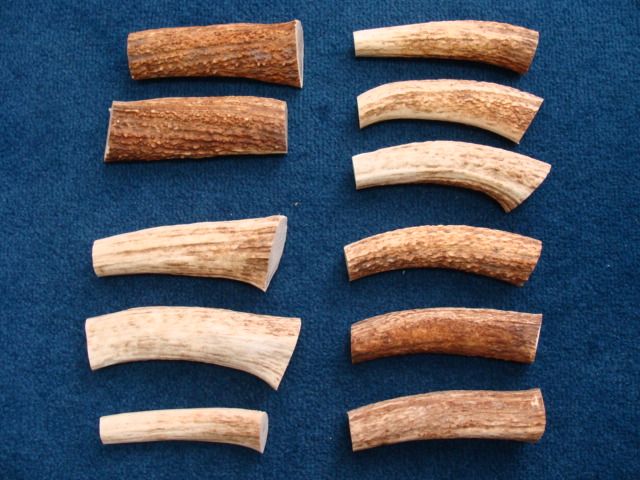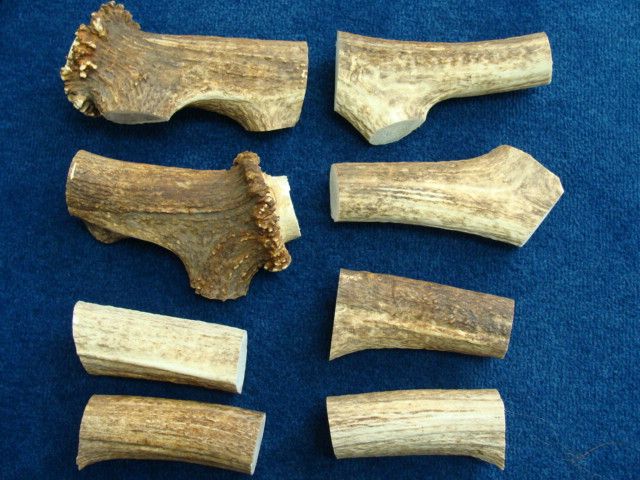I've done it a few times so here is just one way to consider doing it.
Decide if you want to cut off the crown or not. If you are cutting it off for a lanyard or something else, just use a typical wood hand saw for a straight cut and saw it off to your desired thickness. If not, most antler handles are 5" in length so you start at the crown end and cut your way to the tips 5" at a time. Normally where the antlers branch off, the intersection is too big or too oddly shaped for a handle so that gets cut around as waste. Also, the tips are normally too small for a knife handle so they get some other use you think up or thrown. We drill out the end and glue in a ferro rod as a primitive looking fire starter flint. There is an uncomfortable amount of waste if you are determined to get as many handles out it as you can. You are lucky to get 50% for knife handles from Elk.
Elk antler can have thin "walls" since the pith channel is so large in places. If you use a thinner wall section for a handle, scrape out all the pith and when you glue up a knife to it, make sure it is hollow is completely filled with epoxy for strength.
If you want to darken it, soak it potassium permanganate which is used for hard water conditioner treatment. Home centers and Sears sells it in the water conditioner supplies area. Potassium Permanganate is fairly caustic and an oxidizer and you want to be careful with it. No kidding. Wear glove, eye protection, do it outside, etc. It's dangerous if you don't treat it with respect but on the other hand so is gasoline or pool chemicals. It's used for water treatment so it can go down the drain when you are done. Just flush with lots of water after.
To darken, make a weak solution (what ever that is say a few ounces (powder or liquid) to a gallon of water - increase if the treatment is taking too long), drop in the antler, check on it every 15 minutes or so. It will be purple when you put it in but the potassium permanganate is oxidizing and kind of burning the antler as it soaks so it keeps getting a darker color until it almost turns black and starts to crumble apart. I know this because I've done it -- more than once, until I figured I better pay attention to it. All imported Stag antler was originally white looking, just like typical Elk or Moose antler. In order to export the product, it is soaked in potassium permanganate as a method of pest control to insure no bad bugs or other voodoo gets imported to the US.
When it gets a reddish dark brown, pull it out, wash it off. Let is dry. It's easy to go too far and end up with black, damaged antler. You might pull it out at a lighter color than you might like, let it dry and check the color. If it's too light, you can just repeat the process.
If it came out of a bar as a mount, the antler is probably hand painted to darken it. You can leave it, sand the paint off off or just let the potassium juice take it off. You will want to test one piece first.
Hope that helps.



